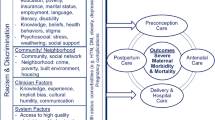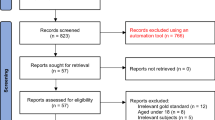Abstract
Despite improvements in service delivery and patient management, low birth weight among infants has been a persistent challenge in South Africa. The study aimed to explore the relationship between depression before pregnancy and the low birth weight (LBW) of infants in post-apartheid South Africa. This study utilized data from Waves 1 and 2 of the South African National Income Dynamics Study, the main outcome being a dichotomous measure of child LBW (<2500 g) drawn from the Wave 2 child questionnaire. Depressive symptoms of non-pregnant women was the main predictor drawn from the Wave 1 adult questionnaire. Depressive symptoms were screened using the 10-item four-point Likert version of the Center for Epidemiologic Studies Depression Scale (CES-D) instrument. A total score of 10 or greater on the CES-D indicates a positive screen for depressive symptoms. An adjusted logistic regression model was used to examine the relationship between women’s depression before pregnancy and infant LBW. A sample size of 651 women in Wave 1 was linked to 672 newborns in Wave 2. The results of the adjusted logistic regression model indicated depressive symptoms (CES-D ≥ 10) prior to pregnancy were associated with infant LBW (adjusted OR 2.84, 95 % CI 1.08–7.46). Another significant covariate in the model was multiple childbirths. Our finding indicates that women’s depressive symptoms prior to pregnancy are associated with the low birth weight of newborns and suggests that this association may not be limited to depression present during the ante-natal phase.

Similar content being viewed by others
References
Goldenberg, R. L., & Culhane, J. F. (2007). Low birth weight in the United States. American Journal of Clinical Nutrition, 85(2), 584S–590S.
Vigod, S. N., Villegas, L., Dennis, C. L., et al. (2010). Prevalence and risk factors for postpartum depression among women with preterm and low-birth-weight infants: A systematic review. BJOG, 117(5), 540–550.
Chopra, M., Daviaud, E., Pattinson, R., et al. (2009). Saving the lives of South Africa’s mothers, babies, and children: Can the health system deliver? Lancet, 374(9692), 835–846.
Organisation for Economic Cooperation and Development. (2011). Infant health: Low birth weight. http://dx.doi.org/10.1787/health_glance-2011-11-en
Zimmer-Gembeck, M. J., & Helfand, M. (1996). Low birthweight in a public prenatal care program: Behavioral and psychosocial risk factors and psychosocial intervention. Social Science and Medicine, 43(2), 187–197.
Teitler, J. O., Reichman, N. E., Nepomnyaschy, L., et al. (2007). A cross-national comparison of racial and ethnic disparities in low birth weight in the United States and England. Pediatrics, 120(5), e1182–e1189.
Khoshnood, B., Wall, S., & Lee, K. S. (2005). Risk of low birth weight associated with advanced maternal age among four ethnic groups in the United States. Maternal Child Health Journal, 9(1), 3–9.
Blondel, B., Kogan, M. D., Alexander, G. R., et al. (2002). The impact of the increasing number of multiple births on the rates of preterm birth and low birthweight: An international study. American Journal of Public Health, 92(8), 1323–1330.
Odell, C. D., Kotelchuck, M., Chetty, V. K., et al. (2006). Maternal hypertension as a risk factor for low birth weight infants: Comparison of Haitian and African-American women. Maternal Child Health Journal, 10(1), 39–46.
Abu-Ghanem, S., Sheiner, E., Sherf, M., et al. (2012). Lack of prenatal care in a traditional community: Trends and perinatal outcomes. Archives of Gynecology and Obstetrics, 285(5), 1237–1242.
Manikkam, L., & Burns, J. K. (2012). Antenatal depression and its risk factors: An urban prevalence study in KwaZulu-Natal. South African Medical Journal, 102(12), 940–944.
Grote, N. K., Bridge, J. A., Gavin, A. R., et al. (2010). A meta-analysis of depression during pregnancy and the risk of preterm birth, low birth weight, and intrauterine growth restriction. Archives of General Psychiatry, 67(10), 1012–1024.
Brennan, P. A., Hammen, C., Andersen, M. J., et al. (2000). Chronicity, severity, and timing of maternal depressive symptoms: Relationships with child outcomes at age 5. Developmental Psychology, 36(6), 759–766.
Marcus, S. M., Flynn, H. A., Blow, F. C., et al. (2003). Depressive symptoms among pregnant women screened in obstetrics settings. Journal of Women’s Health, 12(4), 373–380.
Dietz, P. M., Williams, S. B., Callaghan, W. M., et al. (2007). Clinically identified maternal depression before, during, and after pregnancies ending in live births. American Journal of Psychiatry, 164(10), 1515–1520.
Petersen, I., & Lund, C. (2011). Mental health service delivery in South Africa from 2000 to 2010: One step forward, one step back. South African Medical Journal, 101(10), 751–757.
Class, Q. A., Khashan, A. S., Lichtenstein, P., et al. (2013). Maternal stress and infant mortality: The importance of the preconception period. Psychological Science, 24(7), 1309–1316.
Witt, W. P., Wisk, L. E., Cheng, E. R., et al. (2012). Preconception mental health predicts pregnancy complications and adverse birth outcomes: A national population-based study. Maternal and Child Health Journal, 16(7), 1525–1541.
Radloff, L. S. (1977). The CES-D scale. Applied Psychological Measurement, 1(3), 385–401.
Bjorgvinsson, T., Kertz, S. J., Bigda-Peyton, J. S., et al. (2013). Psychometric properties of the CES-D-10 in a psychiatric sample. Assessment, 20(4), 429–436.
Andresen, E. M., Malmgren, J. A., Carter, W. B., et al. (1994). Screening for depression in well older adults: Evaluation of a short form of the CES-D (Center for Epidemiologic Studies Depression Scale). American Journal of Preventive Medicine, 10(2), 77–84.
Rao, J. N. K., & Scott, A. J. (1984). On Chi-squared tests for multiway contingency tables with cell proportions estimated from survey data. Annals of Statistics, 12(1), 46–60.
Joyce, K., Diffenbacher, G., Greene, J., & Sorokin, Y. (1984). Internal and external barriers to obtaining prenatal care. Social Work in Health Care, 9(2), 89–96.
Kopelman, R. C., Moel, J., Mertens, C., et al. (2008). Barriers to care for antenatal depression. Psychiatric Services, 59(4), 429–432.
Myer, L., & Harrison, A. (2003). Why do women seek antenatal care late? Perspectives from rural South Africa. Journal of Midwifery & Women’s Health, 48(4), 268–272.
Jesse, D. E., Dolbier, C. L., & Blanchard, A. (2008). Barriers to seeking help and treatment suggestions for prenatal depressive symptoms: Focus groups with rural low-income women. Issues in Mental Health Nursing, 29(1), 3–19.
Kramer, M. S., Séguin, L., Lydon, J., et al. (2000). Socio-economic disparities in pregnancy outcome: Why do the poor fare so poorly? Paediatric and Perinatal Epidemiology, 14(3), 194–210.
Institute of Medicine. (1985). Preventing low birthweight. http://www.ncbi.nlm.nih.gov/books/NBK214468/pdf/TOC.pdf
Krans, E. E., & Davis, M. M. (2012). Preventing low birthweight: 25 years, prenatal risk, and the failure to reinvent prenatal care. American Journal of Obstetrics and Gynecology, 206(5), 398–403.
Statistics South Africa. (2004). Concept and definitions. Pretoria: Statistics South Africa.
Acknowledgments
Dr. Tomita was supported by NIH Research Training Grant (R25 TW009337) funded by the Fogarty International Center and the National Institute of Mental Health. The content is solely the responsibility of the authors and does not necessarily represent the official views of the NIH. The data was accessed through Southern Africa Labour and Development Research Unit. National Income Dynamics Study 2008 and 2010–2011, Wave 1 and 2 (dataset). Version 4.1 for Wave 1 and version 1.0 for Wave 2. Cape Town: Southern Africa Labour and Development Research Unit (producer), 2013. Cape Town: Data First (distributor), 2013.
Conflict of interest
All authors have approved the manuscript as submitted and none of the authors have a conflict of interest to declare.
Author information
Authors and Affiliations
Corresponding author
Rights and permissions
About this article
Cite this article
Tomita, A., Labys, C.A. & Burns, J.K. Depressive Symptoms Prior to Pregnancy and Infant Low Birth Weight in South Africa. Matern Child Health J 19, 2179–2186 (2015). https://doi.org/10.1007/s10995-015-1732-z
Published:
Issue Date:
DOI: https://doi.org/10.1007/s10995-015-1732-z




